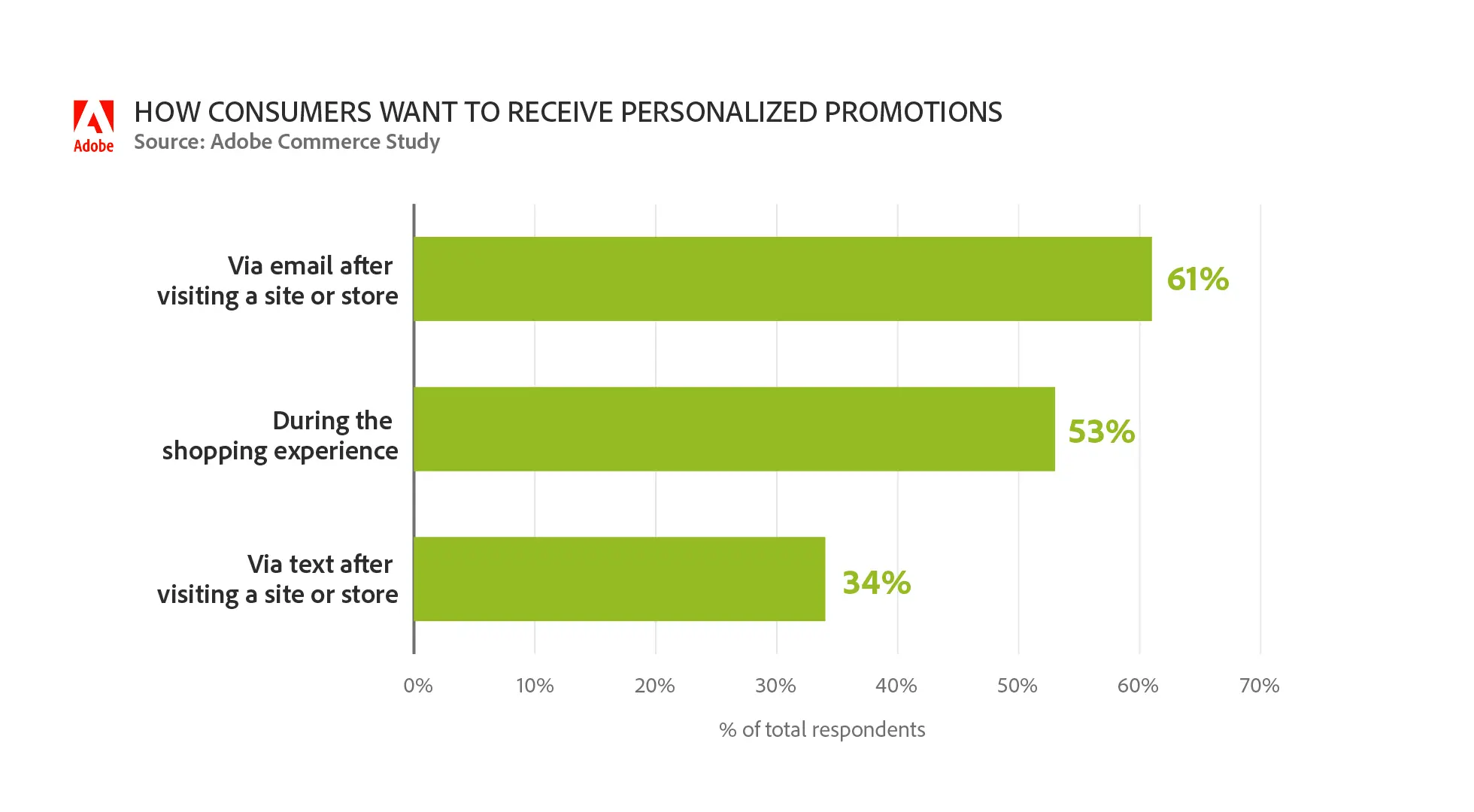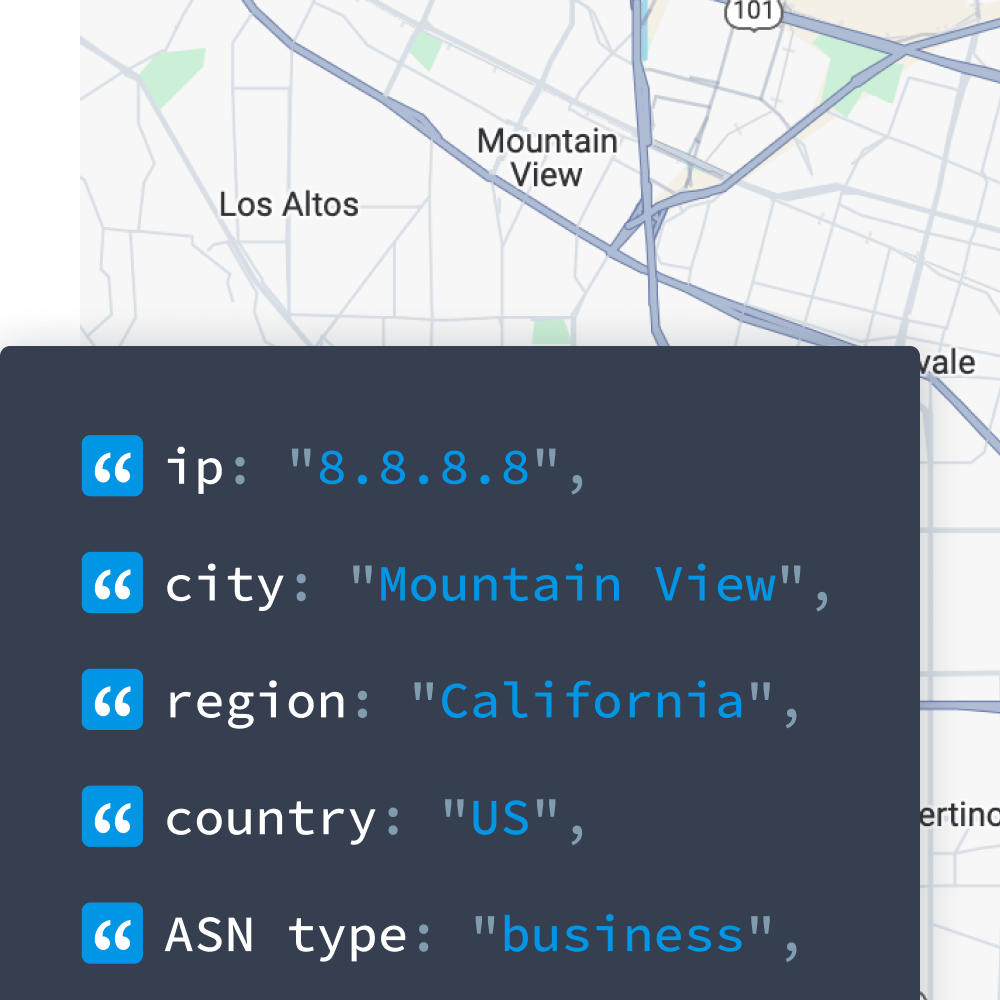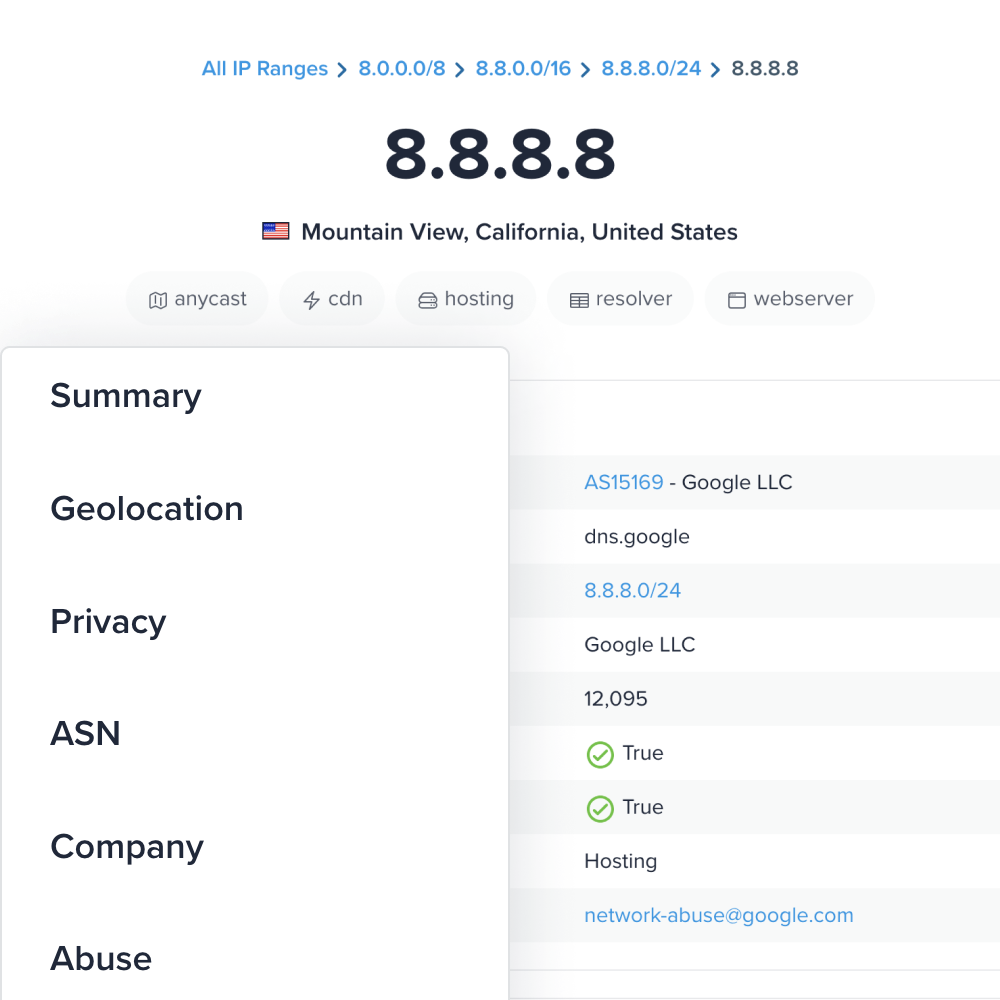Explore our IP Address Database Downloads for instant access to our IP address insights
Learn moreIP Geo-Targeting Tips for Better Marketing & PPC Campaigns

Personalization is something we all want. Whether it’s our name on a morning Starbucks cup or a recommended series on our watchlists, we prefer content that’s directed personally at us and reflects our interests. More than 70% of consumers expect companies to deliver personalization, and an even higher percentage get frustrated when they don’t experience it.
Yet marketing campaigns aren’t always geared toward personalization.
Traditional marketing methods depend on reaching millions of people to sell a few thousand products. These types of campaigns often end up reaching the wrong people while potential customers are overlooked, and companies lose money on targeting the wrong audience. It can also be tough to measure return on investments, audience engagement, and customer conversion rates.
Whether you’re carrying out B2B marketing or targeting individual customers, reaching just the clients you want is where IP geo targeting marketing shines. Using IPinfo data ensures that your targeting is accurate and reliable, giving you just the audiences you want.
What Is IP Targeting?
First, let’s discuss what an IP address is: a unique numerical code that is used to send and receive data over the internet. Each device on the internet has an IP address, whether it’s a mobile phone, laptop, or tablet. Knowing an IP address can identify a device’s general location. IP targeting for geolocation is helpful for:
- Laser-accurate demographic targeting
- Gaining customer insights
- Offering loyalty rewards for existing customers
- Attracting new business
- Obtaining measured results like tracking check-ins, traffic, and sales
- Limiting IP access control to customers in relevant geographic locations
IP targeting is a form of digital marketing that involves targeting consumers through their IP addresses. This method of marketing allows hyper-targeted advertisements to be delivered to specific networks and devices. They could be home or business addresses or a public WiFi network.
You could think of IP targeting as if it were a digital shipping warehouse, whereby workers are assigned a country and focus solely on this location. IP targeting is a similar concept, just with fewer shipping containers.
How Does IP Targeting Work?
The process of using IP targeting is two-fold.
IP Targeting Based on Geolocation
Geolocation targeting functions by determining a user’s IP address, then their physical location, based on a variety of factors depending on the IP address provider. IP targeting based on geolocation can be narrowed by country, state, city, and zip code. IPinfo geolocation data is informed by our proprietary Probe Network, ensuring unparalleled accuracy.
Get IP geolocation data in C#, or explore how to get IP geolocation in Go.
IP Targeting by Network
Network targeting identifies the name of the organization behind an IP address and its domain, using data from internet public records. The IPinfo API looks at an IP range and what organization owns that IP range to determine the affiliated company, allowing for targeting of specific companies. Our detailed tagging also identifies the type of business: ISP, business, hosting service, or educational institution.
Get instant access to IP address geolocation
Whether you're looking to enhance security measures, personalize user experiences, or streamline business operations, our IP location API can enrich your capabilities.
Advantages of IP Targeting
Using geolocation data or IP to Company information, your marketing campaigns can target high-priority leads, as previously covered. There are several advantages to IP targeting:
- More relevant ads: Targets audience segments based on geolocation or company IP, ensuring ads reach high-priority leads.
- Increased engagement: Delivers personalized campaigns tailored to specific regions or demographics, boosting audience interaction.
- Cost-effective marketing: Offers flexible long- and short-term campaign options at lower costs than traditional media like TV or print.
- Improved ROI: Minimizes wasted impressions by focusing on relevant users, maximizing the impact of your ad spend.

Adding an IP-targeted campaign to your current marketing strategy is a great way to improve your reach and improve lead generation. Below are five tips to help you in your journey.
How Does IP Address Data Improve Targeted PPC Ads?
IP address data reveals geolocation information for individuals while also protecting their privacy. Here is some of the data IP addresses can provide:
- Country
- City
- State
- Region
- Postal code
With this information, businesses can target areas with a high audience density, ranging from whole countries to small areas.
This is an effective way of improving your advertising ROI as it limits your audience to consumers who are likely to use your product or service. All this to say, IP addresses are the backbone to pinpointed PPC campaigns.
Tips for IP Geo-Targeted Marketing and PPC Campaigns
Here’s how to maximize marketing performance with targeted strategies for IP geo-targeting and PPC campaigns.
1. Choose the Right Target Demographic
Choosing the right target demographic is crucial for a successful geo-targeted marketing campaign using IP address data. Start by identifying the geographic regions most relevant to your business—IP targeting enables you to focus on specific countries or cities. This ensures your ads are seen by audiences more likely to engage with your offerings.
Explore our IP geolocation auto-updating app to see where your visitors are coming from.
If you need help identifying regions to target, consider the interests, age groups, or gender of your ideal consumer, determine where high concentrations of that type of audience live, then target those areas.
Also consider audience segmentation based on industry or company type. For example, analyzing website traffic to identify returning company IPs can reveal high-value leads for B2B campaigns.
While the criteria above can be used to narrow down your IP targeting list, only you will know what demographic you want to market to and what criteria you need to personalize your ads.
2. Make Your Ads Electrifying
IP targeting can easily take over a marketing campaign—it becomes more about finding the perfect audience than creating the perfect ad. Don’t forget that the design is equally important! Well-designed, enticing content will engage customers.
If you’ve gone to the trouble of targeting your audience through their IP address, make the effort to personalize the design and make the recipients feel special. This can be as simple as including their name in the mailshot, or making a bespoke offer when it’s their birthday. Consider including the following details in your ad:
- Your unique selling proposition
- An attention-grabbing headline, ideally seven words or less
- An offer they can’t refuse
- Advantages that speak to your majority customer persona
- Newsworthy: List any admin changes, new product lines, and seasonal promotions
- A risk-free offer
When you’re putting together a campaign, take into account the devices you expect your customers to use. They will see things differently depending on whether they’re using a desktop or mobile device.
In 2023, 42% of consumers globally have clicked an online ad with the intent to buy a product, up from 40% in 2022 across all age groups, demonstrating the growing influence of online ads on consumer purchasing behavior.
You have already created the experience consumers expect with better item data on your website. Now you need to create advertisements to drive them there.
Always ensure that you send out the best, personalized ads you can make. After all, finding the perfect audience is brilliant, but connecting with them is even better.
3. Test Different Strategies
Sometimes, even though you’ve perfected your target audience and your ads are amazing, you might not get the response you want from your campaign.
Here’s an example. You’re advertising advanced inventory management systems to retailers, and you’ve created your criteria to target local companies—but you haven’t factored in business size. Sending the same ad to both small and large organizations isn’t going to work.
Splitting the criteria into two different B2B marketing campaigns can be a better, personalized IP-targeted approach. You could market a lower-priced package to smaller businesses, and target large enterprises with the advanced features they need.

It can be more time-consuming and costly, but using different strategies to target different demographics will improve engagement with your potential clients and improve return on ad spends. Make similar, incremental changes with other criteria and demographics to test alternative strategies.
4. Run OmniChannel Campaigns
A multichannel approach to marketing is one method companies can use to ensure they engage with their customer base through multiple touch points, providing a seamless experience across platforms. IP geotargeting enhances omnichannel campaigns by providing location data that complements existing strategies like email marketing.
Instead of replacing traditional methods, IP targeting integrates with them to add greater personalization and relevance. For instance, analyzing customer data allows you to target ads tailored to specific geographic regions or behaviors, reinforcing messaging across channels.
This synergy ensures a cohesive customer journey, boosts engagement, and increases the likelihood of conversion by reaching customers with consistent, personalized content wherever they are. In fact, connected omnichannel campaigns are 2.2 times less fatiguing to audiences than a siloed strategy.

Use In-House Data to Retarget Customers
Especially for account-based marketing and B2C companies, PPC ads need to be precise. Here are some important steps for using PPC to retarget your website visitors:
Firmographics
Using reverse IP lookups, IPinfo’s IP to Company data, or domain names, businesses can gather insights to fuel customized PPC campaigns. In other words, you can use the IP addresses that visit your site to reveal more information about your customers, then target B2B customers with the right messaging.
Integrate CRM data
Additionally, companies can use their CRM data to improve PPC campaigns. Consider an online retailer, for instance. Using a CRM that integrates with marketing platforms, they can use order history, customer demographics, and much more to pinpoint a geotargeted PPC campaign.
Follow PPC Insights
Have any past PPC campaigns revealed unique geographic insights? Do your campaigns tend to get more attention from customers in, say, Ireland than they do in China? This information can help you use geotargeting more effectively.
Keywords
Keywords are essential to any pay-per-click campaign, and here’s why: they make sure that the clicks that you receive are from relevant clients or customers.
With geotargeting, you want to make sure that the keywords associated with your business are also associated with location words. For example, if you run an inventory management business targeting clients in New York, the location is as important a keyword as your services.
The reason for this is simple: if clients are searching “perpetual inventory Montana,” then you may not be able to help them, despite having a relevant product. If they click on your link, this is an expense for your business that isn’t going to provide good ROI.
In short, you also need to be specific with your keywords.
For example, you might provide a VoIP business phone service. Businesses can use this for all sorts of communication needs over the internet, bypassing the need for a lot of expensive hardware. A potential client searching for a solution like this may be searching for a local business.
However, they may not be.
In this situation, consider researching where the majority of businesses that use these solutions are located. Targeting ads to these areas increases the likelihood of a relevant click, potentially from hundreds of miles away.
The same principle applies to using industry-specific keywords on your site. A blog with answers to current questions in your industry (for example, what is IVR or what is retail merchandising?) will help to boost your site’s ranking with keywords. But if you are not based in a technological center, you might want to think about targeting ads for these posts to areas where technology is a major industry.
5. Don’t Overdo It
The specific nature of IP targeting is both an advantage and a challenge.
Imagine you want to sell a student chemistry textbook. If you’re too specific in your targeting, focusing on 18-to-20-year-old students in the chemistry department of a local college, you’ll leave out other potential customers, like older students or lecturers who might recommend the textbook. Expanding geolocations to include the entire campus, student accommodations, and local households with student-age people will also further your reach.
While a wide range will be a little more costly to market, it will include all of your potential clients. Remember that IP address data gives general geolocation details, such as the city where the user resides, so widening your parameters is definitely a good plan.
Being overly specific will leave out portions of your target audience and limit the effectiveness of IP targeting.
Understand Where Your Traffic Comes From
Geotargeting pay-per-click adverts is about driving more traffic to your site. But, to get the most out of your strategy, you need to know where your existing traffic is coming from.
Is it a search engine? If your site is already well-established, it’s likely that a lot of your traffic comes from search engines. Naturally, you want to drive more people to your site using location targeting and pay-per-click ads, but if the majority of your traffic comes from elsewhere, then you may want to consider using geotargeting on another platform.
Does the majority of traffic originate from social media? Search engines aren’t the only place that you can target your customers by location. Facebook, Instagram, and X all have ad features that will let you choose who to target based on location, as well as interests, education level, age, and gender. Social media marketing is a popular choice for startups.
Is it your mailing list? Trends in email marketing indicate that email marketing has one of the highest ROIs of any marketing technique.
With that in mind, you may be able to combine geotargeting your ads with email marketing. You might want to try using location-targeted ads to direct potential customers to a page that allows signups to your mailing list.
So, how do you monitor the sources of your traffic?
A trend towards Robotic Process Automation (RPA) uses in advertising might also prove valuable for your business. If you have the resources, you might want to create a program that will automatically monitor where your traffic comes from. This will save you time in the long run and make implementing geotargeted ads a lot easier.
As well as knowing which platform your customers use to come to your site, make sure to also use analytics software for search engines and social media to see where your clients come from geographically. Not only does this help with marketing, it’s also a great way to discover which products are trending where, which you can use to optimize your stock control system.
Start Benefiting From IP Geotargeting in Your Marketing Strategy Today!
Getting started with geotargeting can transform your advertising strategy. To maximize the impact of your PPC campaigns, clearly define your goals and understand how targeting specific locations can outperform broad, non-specific ads.
Every business has unique location-based needs, and knowing where your customers are—and what they expect from your business—helps create more effective, personalized campaigns.
IPinfo simplifies this process by providing precise IP geolocation data to help you identify and target the right audiences. We empower businesses with superior IP address location accuracy that ensures they’re only selling to customers in the right regions, and the right companies, and nowhere else.
Discover more ways to use IP address data for pinpointed advertising: Connect with a data expert today!
Use an IP API that’s fast, reliable, and secure
Locate users, customize experiences, eliminate site risks, and much more.
This blog was last updated on 1/14/2025: We regularly update our blog posts to ensure they reflect the most current information.
About the author

Meghan is the content strategist at IPinfo, where she develops and writes content for users to better understand the value of IP data and IPinfo products.

